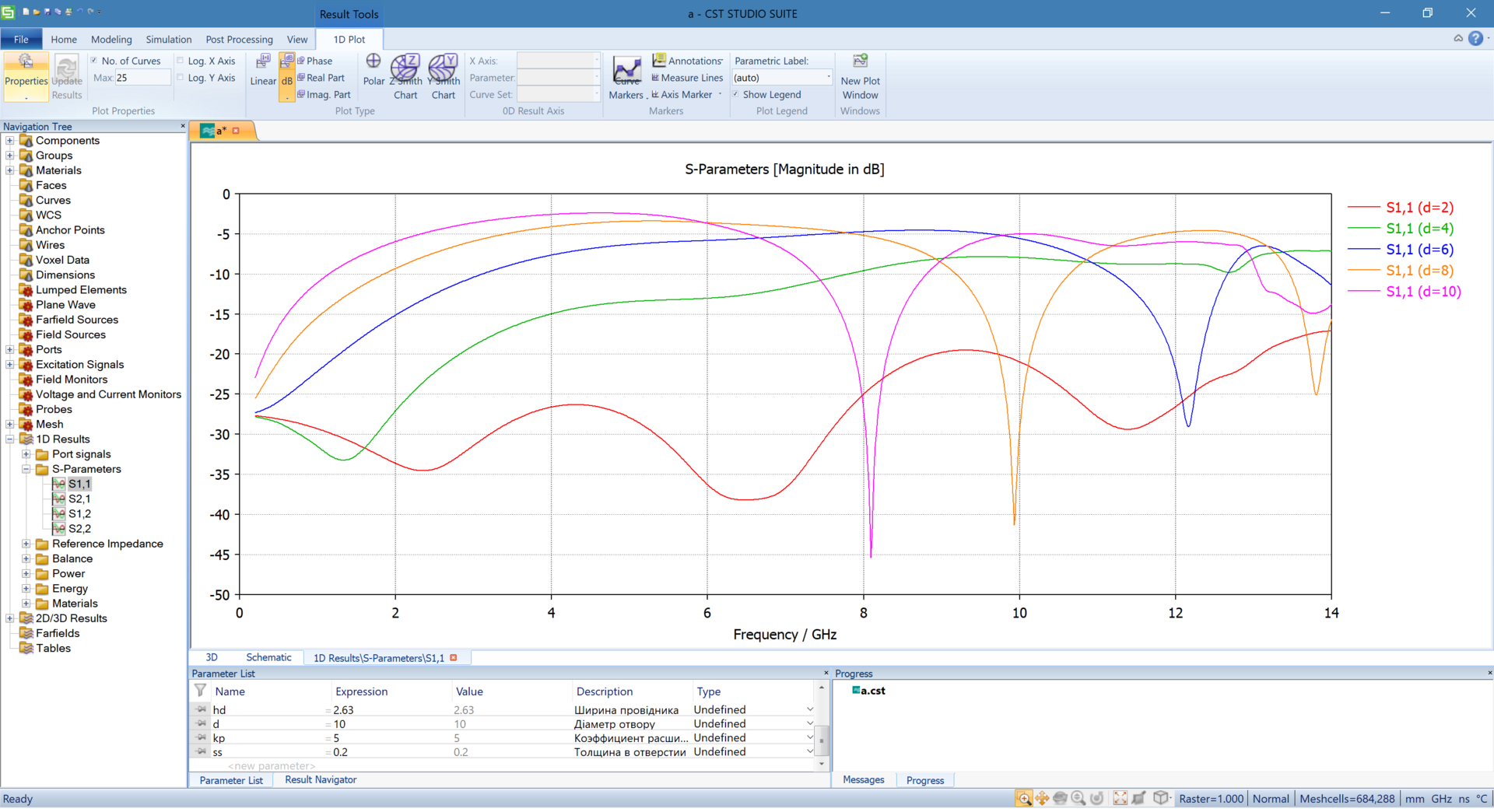Answer the question
In order to leave comments, you need to log in
How to analyze a graph and search for patterns using a neural network?
Hello! The task was to determine the features of the structure of electromagnet-crystalline inhomogeneity according to known characteristics using a neural network. That is, the structure is given in CST Microwave Studio, an example is shown under the spoiler. It is necessary, having its characteristic S11 (given under the second spoiler), using a neural network to determine the geometry, for example, the diameter of the hole on the back. How can this be done?
I plan to implement this in Python using the keras library. Is it rational? Maybe you should look towards matlab?



Answer the question
In order to leave comments, you need to log in
How can this be done?It is necessary to look not at the implementation tool, but towards the design of the National Assembly.
I plan to implement this in Python using the keras library. Is it rational? Maybe you should look towards matlab?
Didn't find what you were looking for?
Ask your questionAsk a Question
731 491 924 answers to any question